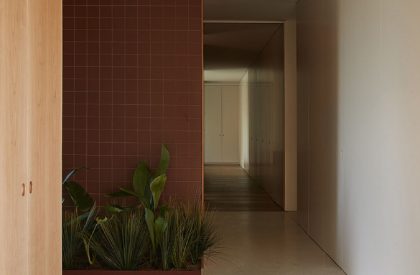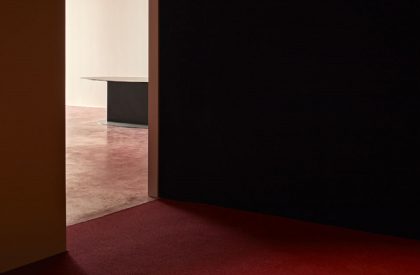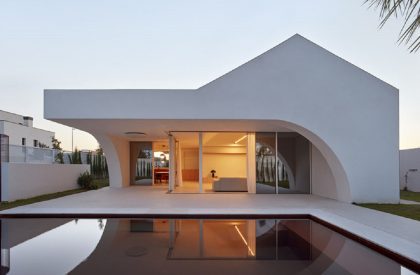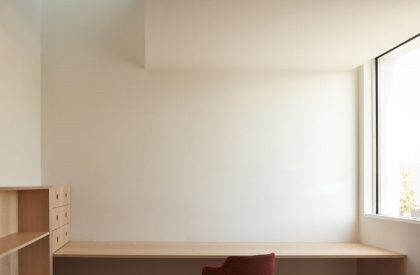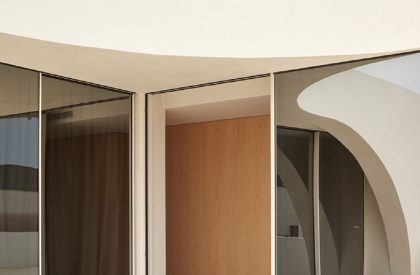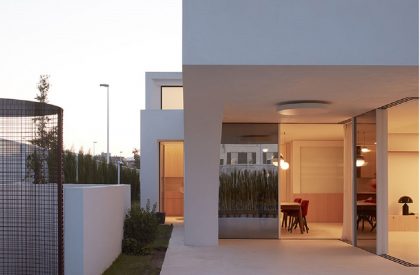Excerpt: DM HOUSE, designed by Horma – studio, aims to articulate a wide domestic program fragmenting the scale of the set both volumetrically and spatially. The composition of different volumes and geometries, together with the constant dialogue between materials, makes it possible to reduce and control the relationship between the parts of the project, both from their interior space and from their external perception.
Project Description
[Text as submitted by architect] Living on one floor implies continuity, articulation, composition and fragmentation of spaces without losing the unity of the whole. The project of this house works the globality of the plot from its maximum use by its users.
The proposal aims to articulate a wide domestic program fragmenting the scale of the set both volumetrically and spatially. The composition of different volumes and geometries, together with the constant dialogue between materials, makes it possible to reduce and control the relationship between the parts of the project, both from their interior space and from their external perception.



The house fits the development of the program to its most favorable orientation, intentionally opening the house to the south and east, protecting itself from the sun of the west and offering an hermetic relationship on its north side where privacy from future neighbors could be compromised. The lighting and ventilation of the rooms on this northh façade will be studied from the variable section of the complex itself, offering natural light and ventilation to each of the spaces of the house.
The ground floor family program is complemented by a guest floor at level +3.5 and a leisure and recreation area at level -3.5, the latter with a more private and sheltered relationship than the rest.
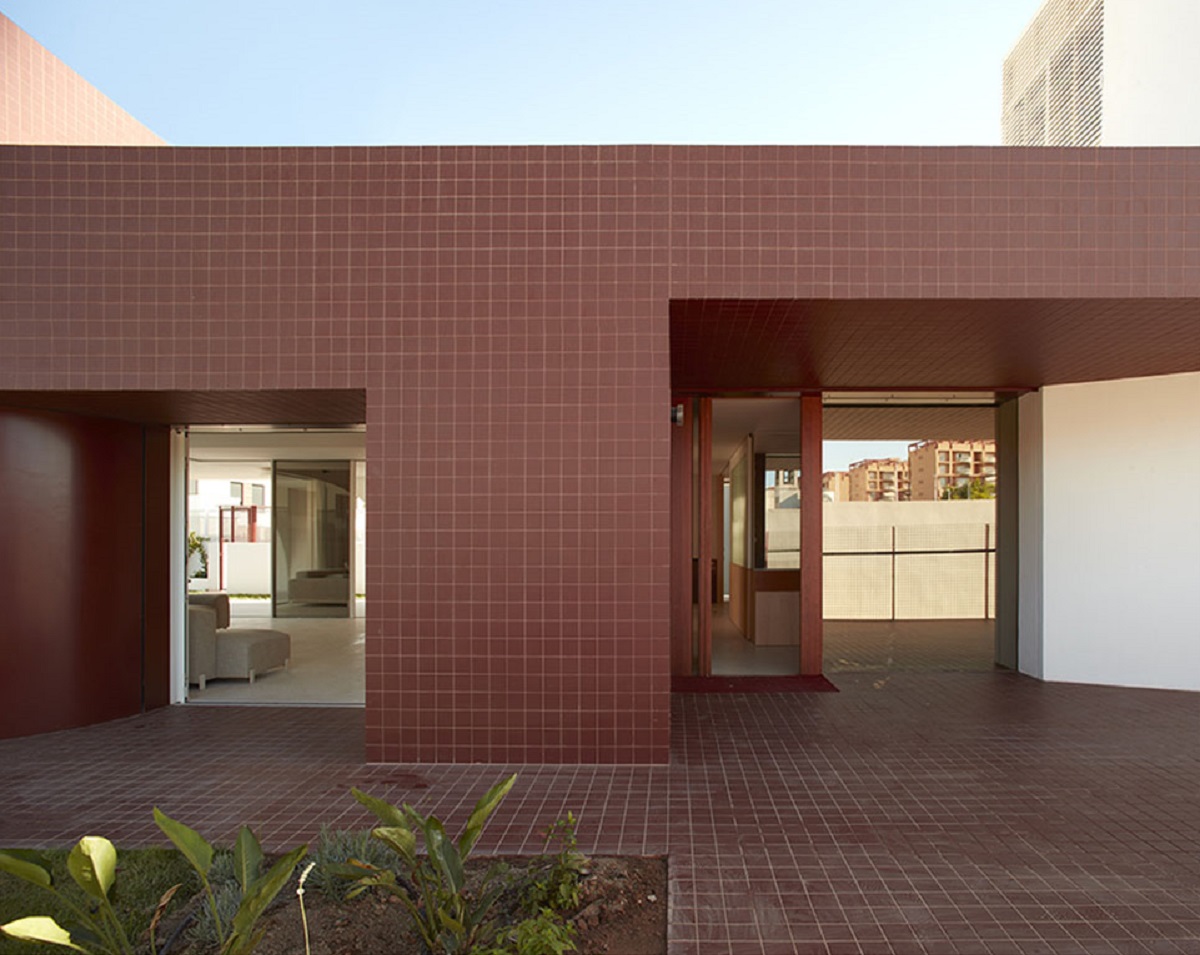


The house, articulated in plan, finds in its section the complete meaning of its spaces, molding the scale and the light inputs of each one of them. This section qualifies and defines the interior rooms and links the different floors by skylights, visual connections and natural light filters from the roof to level -3.5. The continuity and use of materials both indoors and outdoors establishes limits that are more than diffuse, almost non-existent.
Materially, the house is proposed on the outside with a dialogue between a continuous white lime cladding and a ceramic canvas sized with a 10×10 tiles that modulates its envelope and emphasizes its geometry. Inside, both tones are combined in the continuous terrazzo that defines the public area of the ground floor and also in the dialogue of maple and cherry woods that resolve the furniture included in the architecture itself. The white tone, understood as neutral, allows the reddish tones of the ceramic and the different greens of the vegetation to balance and enhance each other.


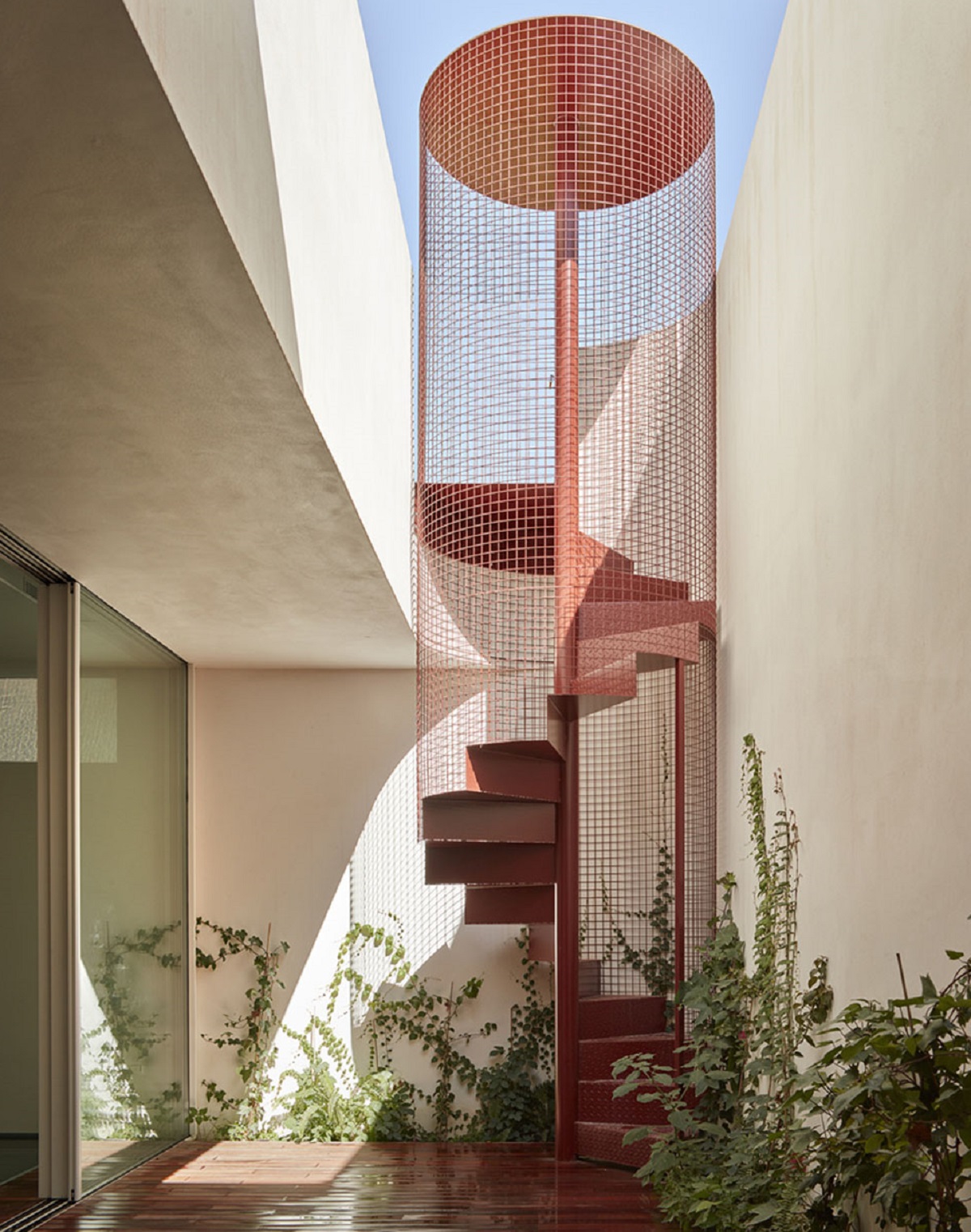
Matter, geometry and space work in harmony and, at the same time, their relationships vary, giving rise to very diverse spaces, designed according to the needs of the inhabitant. Freedom and privacy are understood to achieve the initially established objectives.












